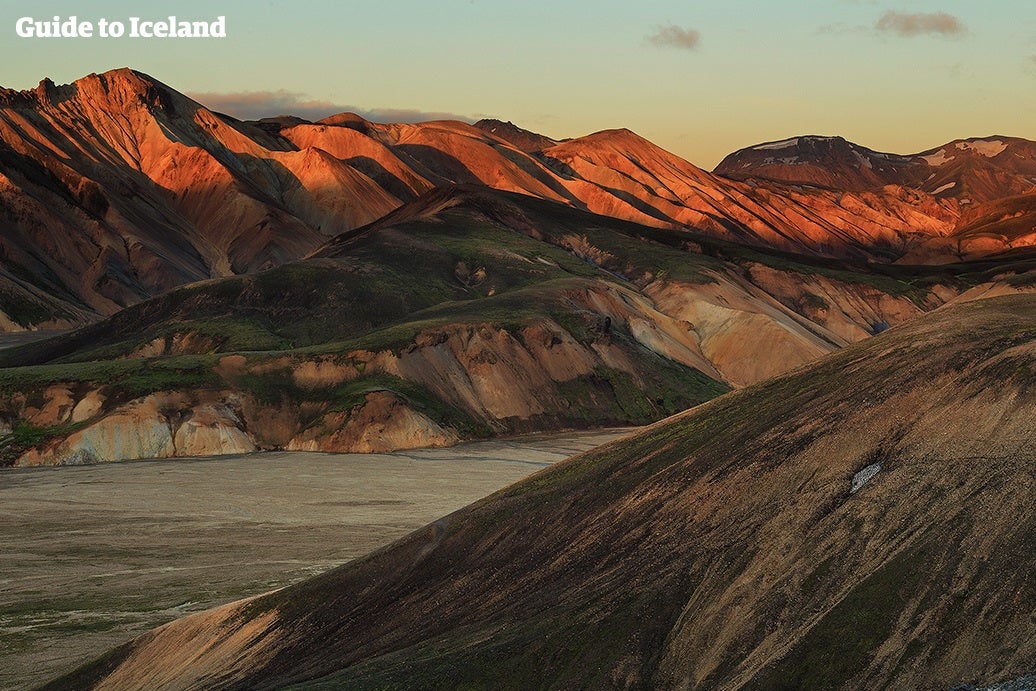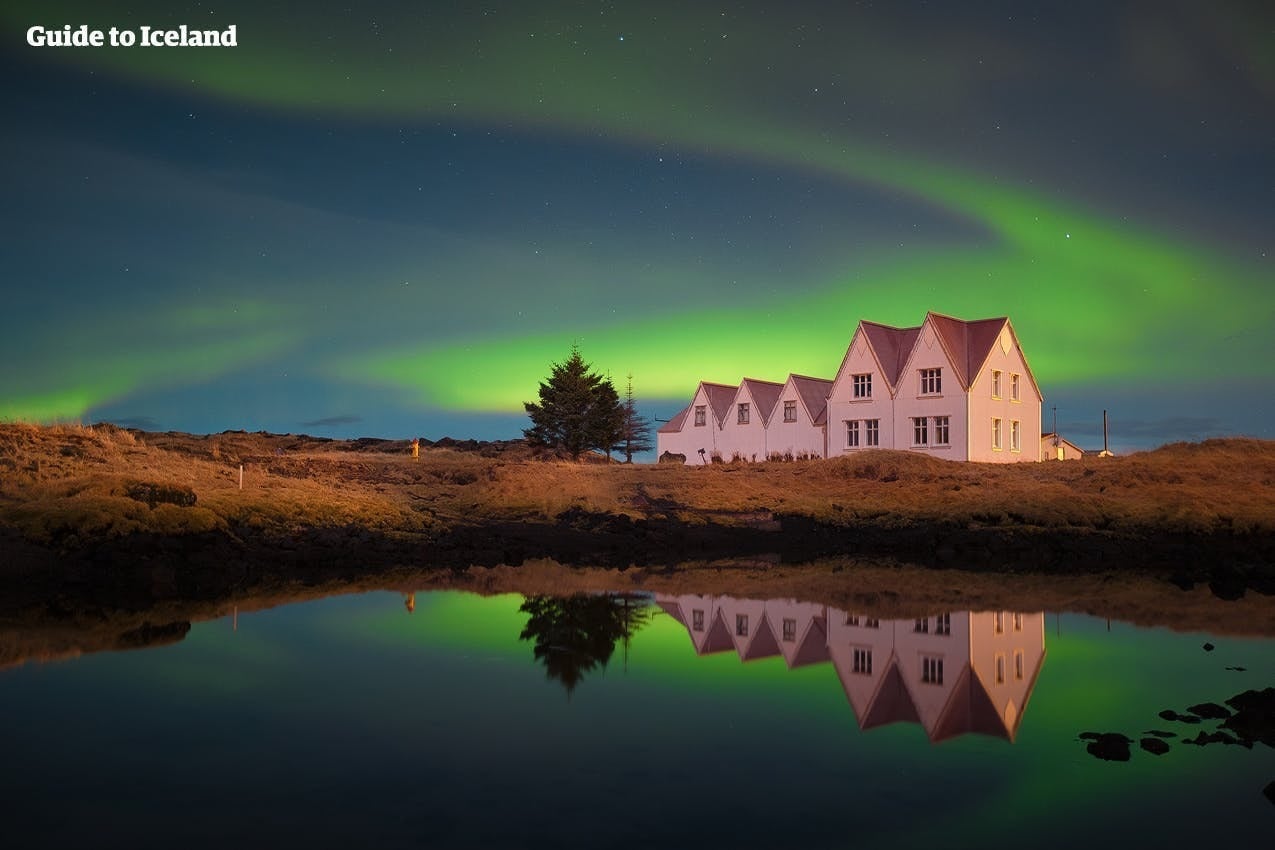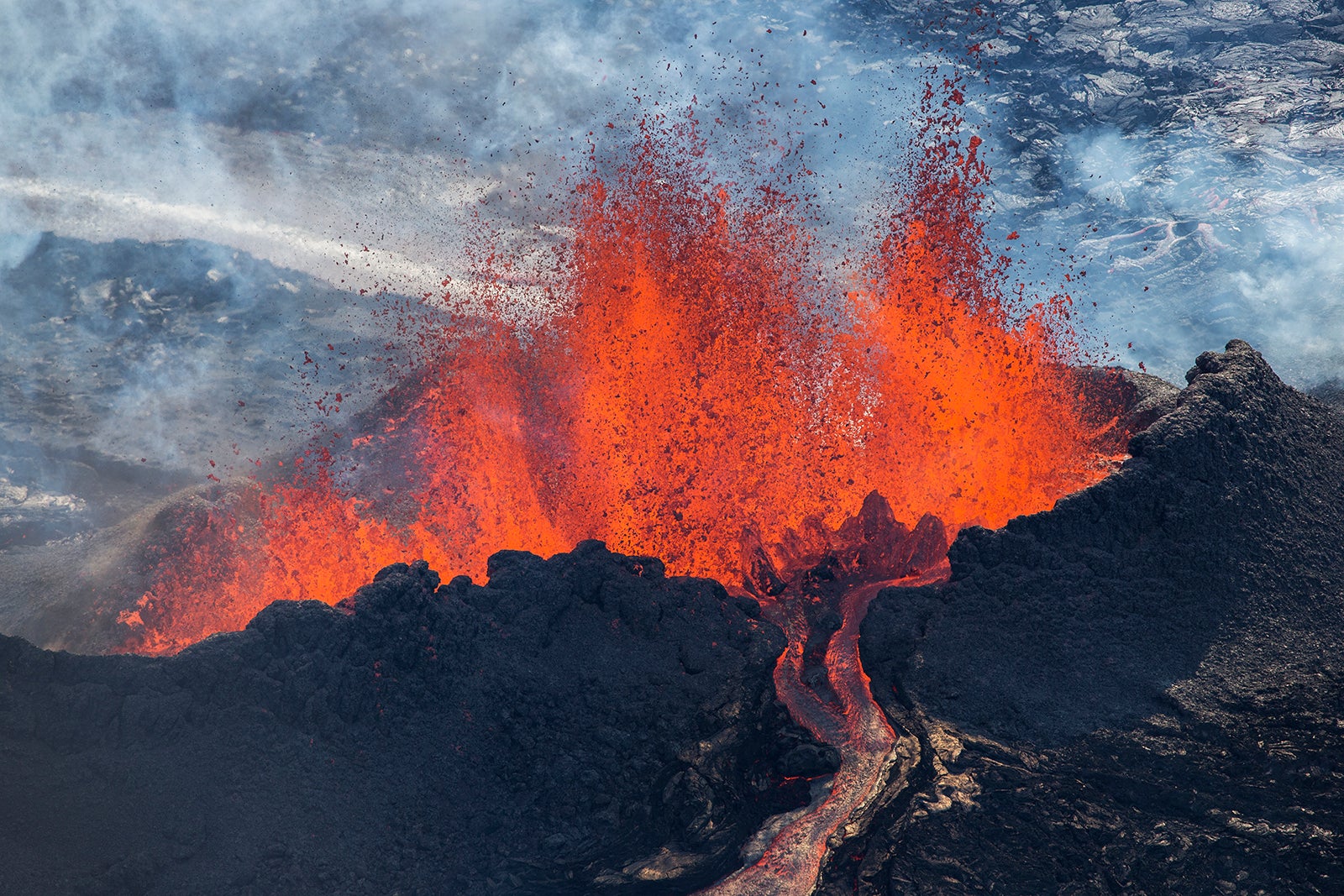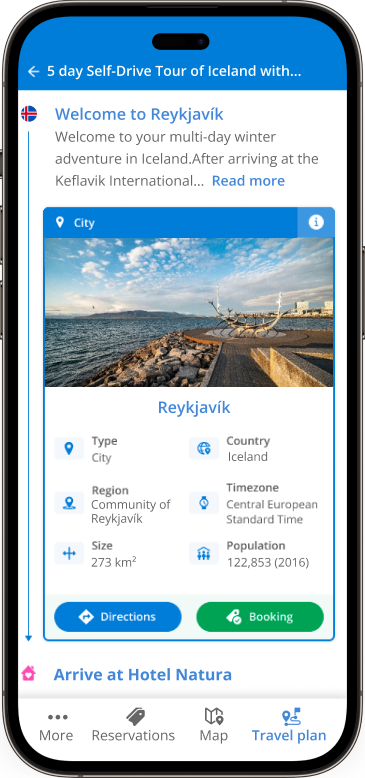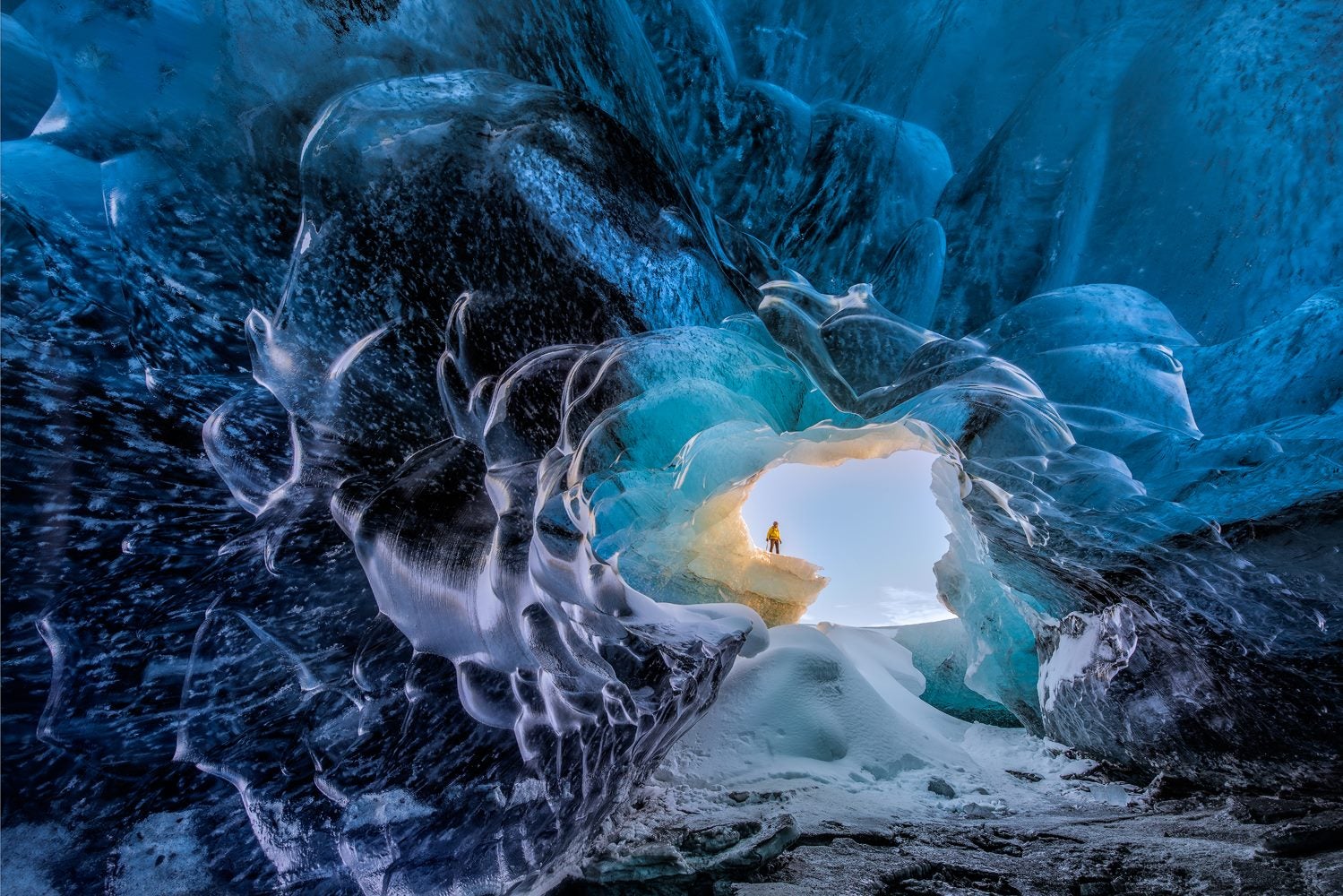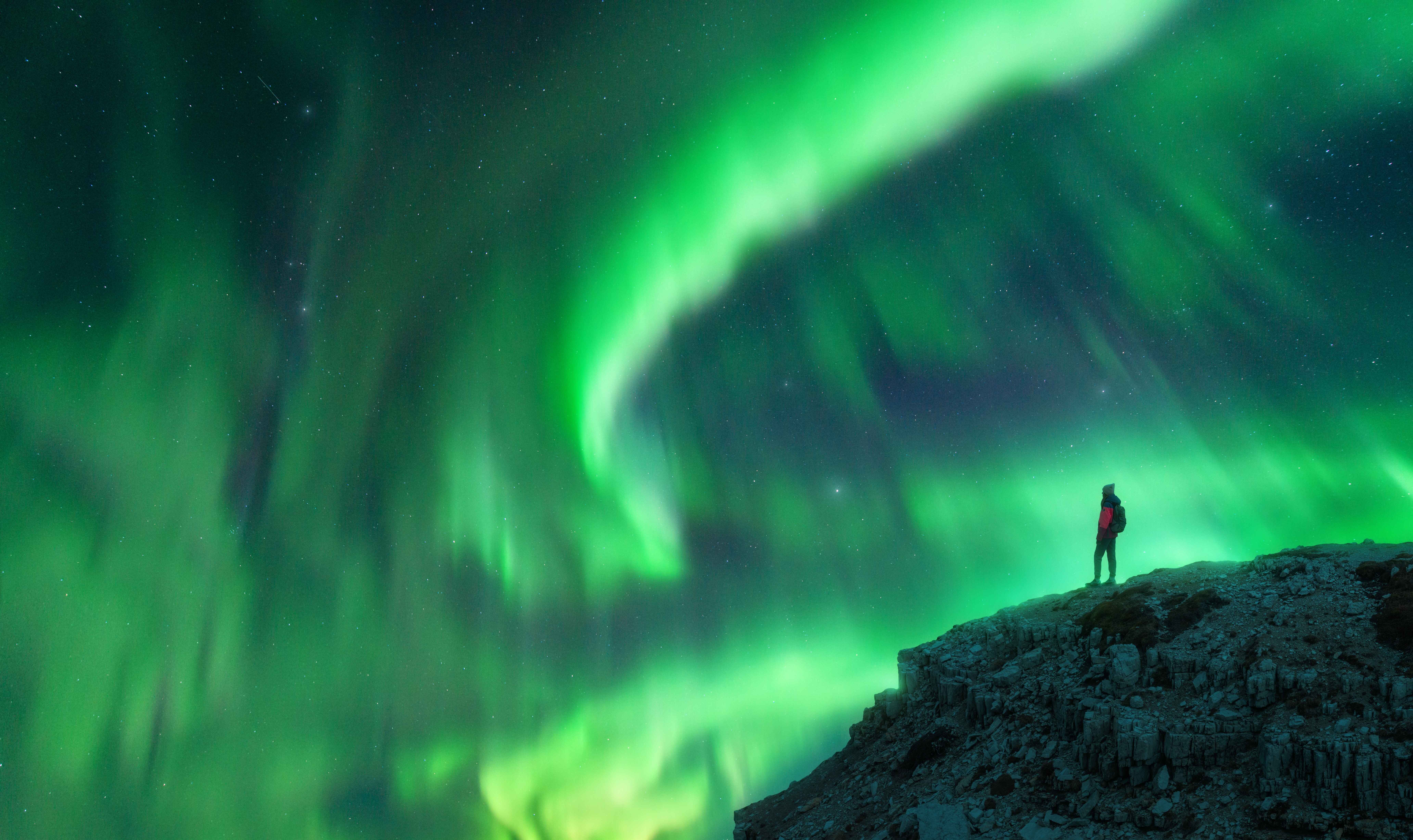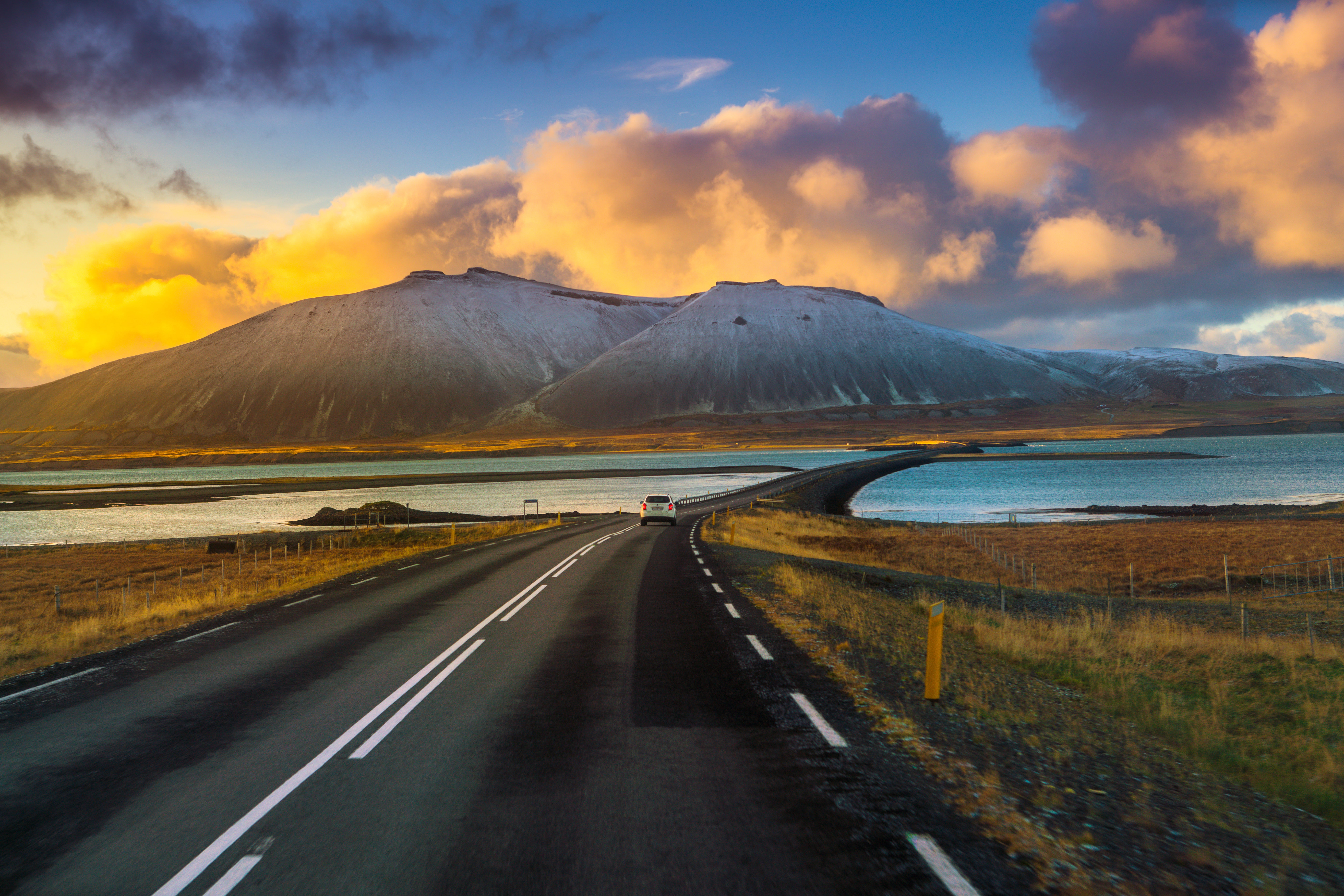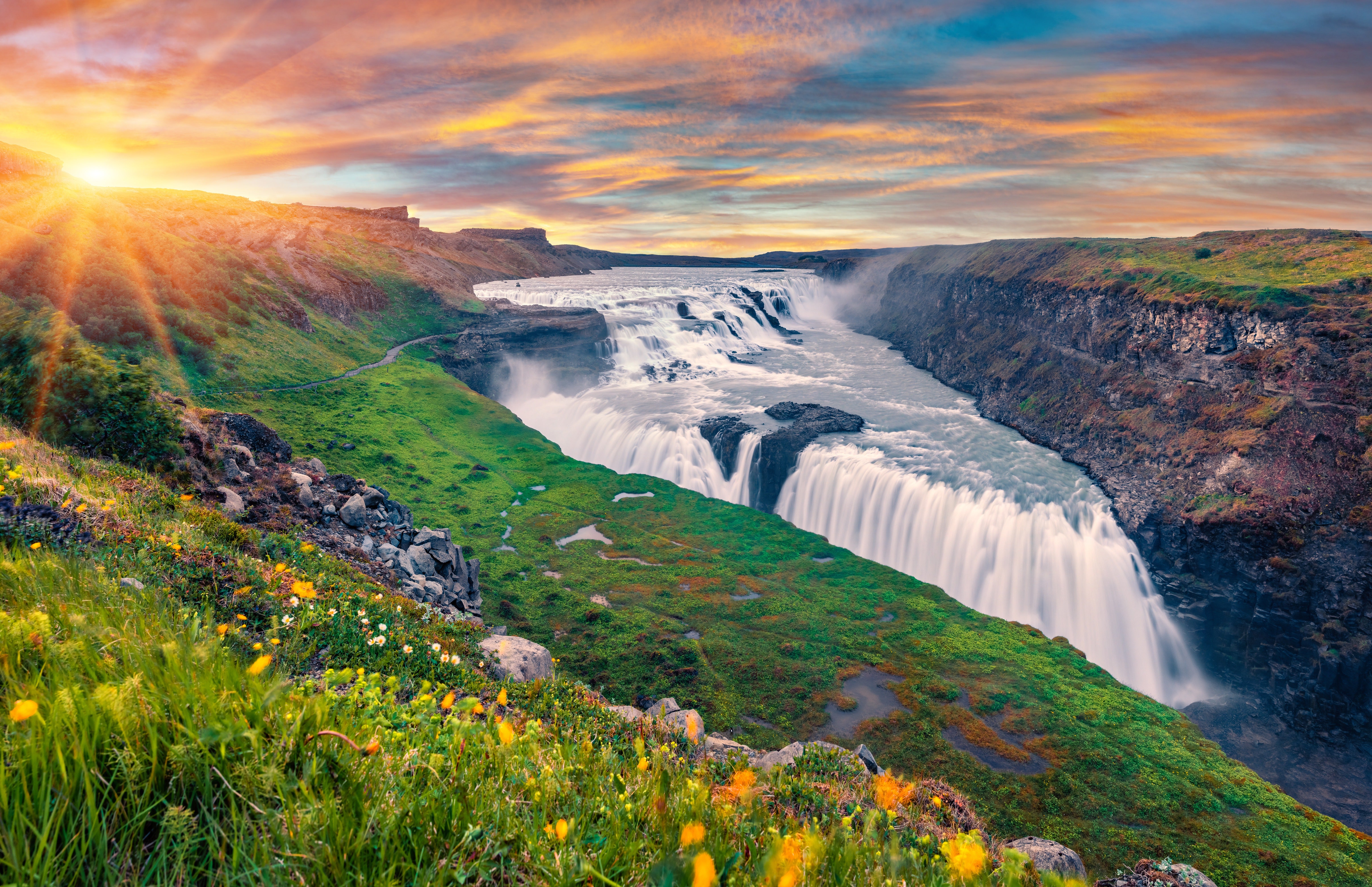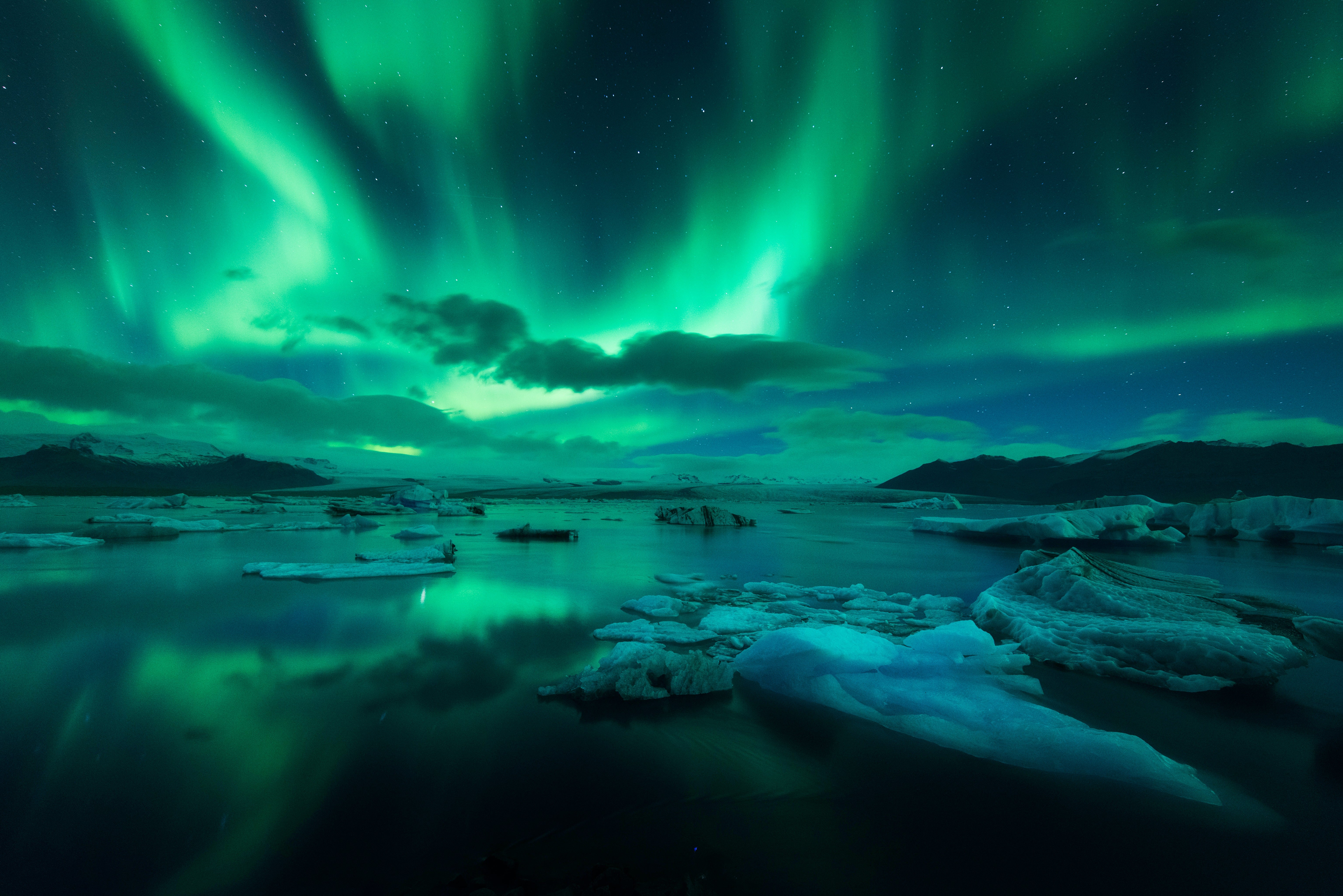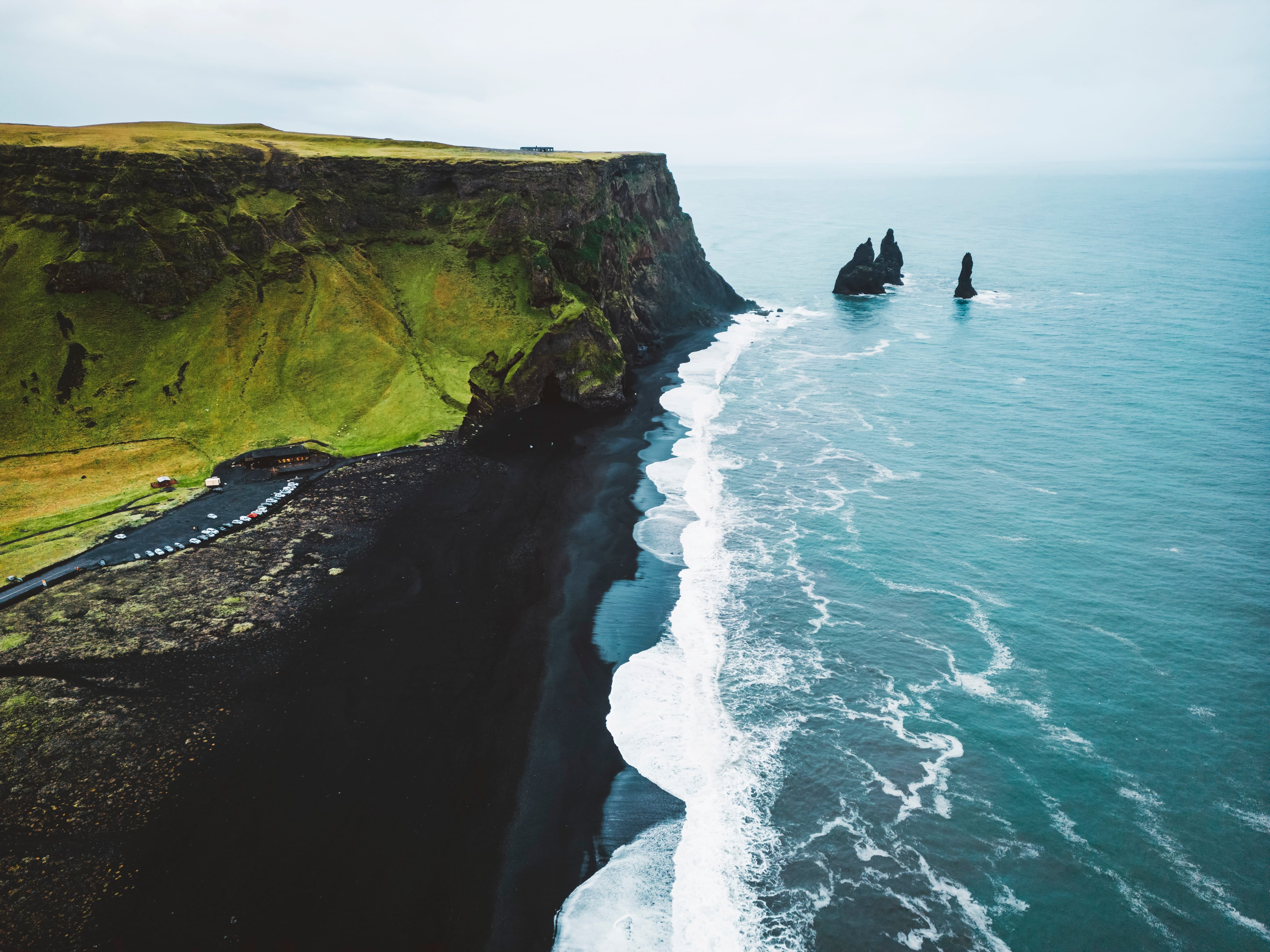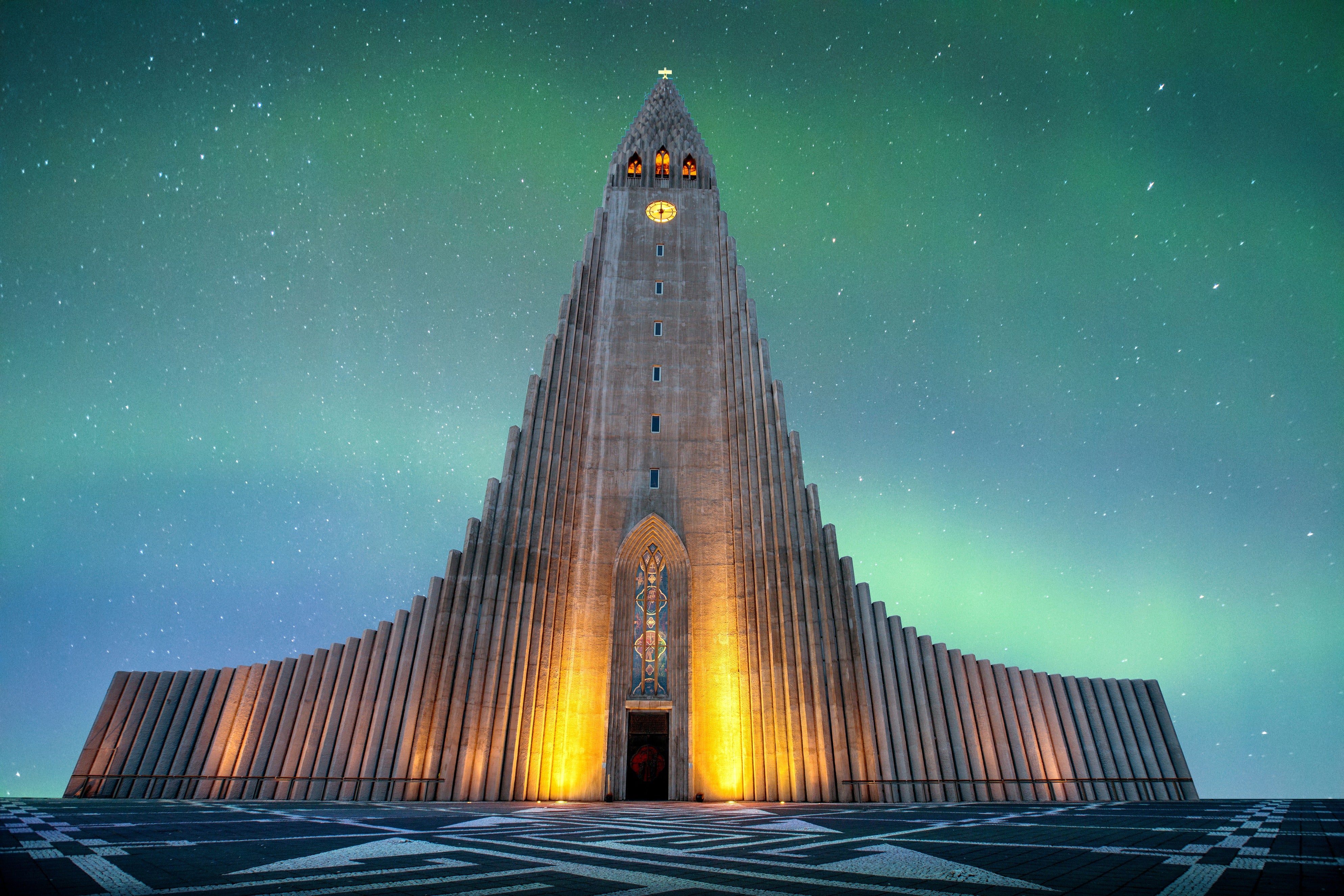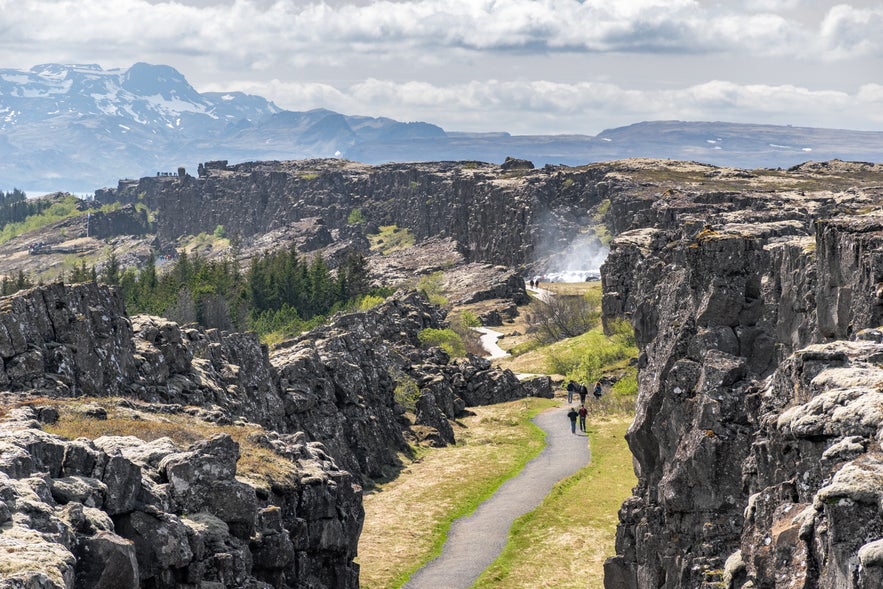
Icelandic Sagas (Íslendingasögur) are epic stories of real events, heroic journeys, and family dramas of the late Viking Age. They were written down in the medieval period, but they originate from an earlier oral history, passed down through generations.
Most Icelandic Sagas take place between the 9th and 11th centuries and reflect dramatized historical accounts. They are pillars of Icelandic identity and reflect the values, laws, and social norms that shaped the nation's early society. They're an important source of information for this time period and continue to influence Icelandic culture today.
Why You Can Trust Our Content
Guide to Iceland is the most trusted travel platform in Iceland, helping millions of visitors each year. All our content is written and reviewed by local experts who are deeply familiar with Iceland. You can count on us for accurate, up-to-date, and trustworthy travel advice.
What makes Icelandic sagas unique is how deeply they are tied to the landscape. Every fjord, valley, and lava field mentioned in the stories still exists. Many of the sagas’ most iconic scenes unfold along the Ring Road, which circles the island.
Self-drive tours through North Iceland pass by the site of Iceland’s largest historic battle, while South Coast tours reveal the dramatic backdrops featured in Njál’s Saga. These landscapes offer a rare chance to experience literature exactly where it was lived.
This guide highlights the most significant Icelandic sagas and shows where you can trace their paths in the real world. Expect brief summaries, key themes, and tips to explore saga sites from west to east.
Key Facts About Icelandic Sagas and Their Geographical Roots
-
Icelandic Sagas are medieval narratives that document real events, personal rivalries, and heroic struggles from Iceland’s early history.
-
While many sagas are rooted in historical truth, the stories are often dramatized with supernatural elements, poetic embellishments, and legendary feats.
-
These stories reflect the values, laws, and beliefs of Iceland’s early settlers and continue to shape modern Icelandic identity.
-
Icelandic sagas are distinct for their connection to actual locations. The places described are not fictional settings but actual landscapes you can still visit today.
-
Many sagas are rooted in real landscapes, from major stories like Egil’s Saga, Njál’s Saga, and Gísli’s Saga to lesser-known tales that reveal local history, folklore, and daily life.
-
Travelers can follow marked Saga Trails across Iceland and visit dedicated museums to learn more about the people, places, and themes found in the sagas.
-
Reading a saga before or during a trip enhances the experience and creates a stronger connection between the story and the land.
- Read more: Icelandic Literature for Beginners
Major Icelandic Sagas and Where They Took Place
Here are some of the most influential Icelandic sagas, each set in a distinct region and centered on the families, conflicts, and events that shaped early Icelandic society.
Egil’s Saga – West Iceland
Egil’s Saga follows the fierce and brilliant Egill Skallagrímsson, one of the most unforgettable figures in all Icelandic sagas. A Viking, outlaw, and gifted poet, Egill was born into a powerful family whose story unfolds around the Borgarfjordur Fjord in West Iceland.
The saga blends accounts of conflict in both Norway and Iceland with intimate moments of sorrow and poetic triumph. Themes include loyalty to kin, defiance of authority, and the healing power of verse, most notably expressed in the moving poem Egil composed after the death of his son.
Key locations from Egil’s Saga are found across the Borgarfjordur region. Borg a Myrum, Egil’s ancestral farm, is the most significant. Nearby are the Skalla-Grimshaugur burial mound and Brakarsund Strait, both tied to major events in his life.
These sites lie about 47 miles (75 kilometers) from Reykjavik and are reachable in just over an hour via Route 1 and Route 50.
The modern town of Borgarnes offers an ideal base for saga-focused travel. It’s home to the Settlement Center, where visitors can explore an exhibition dedicated to Egill’s life. Follow Egil’s journey with an immersive Settlement & Egils Saga Exhibition tour in Borgarnes, designed to bring the saga’s history and characters to life.
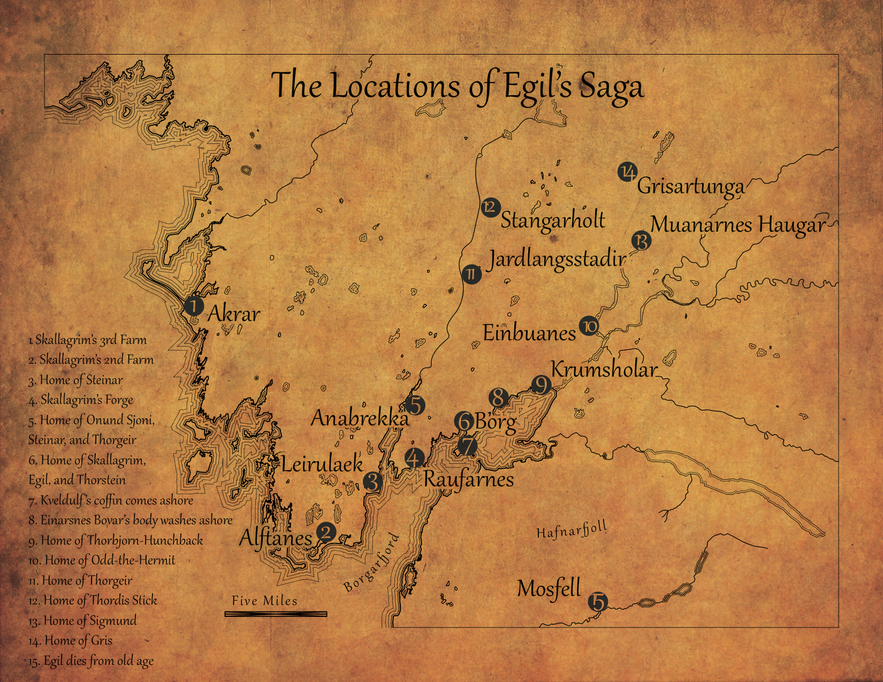
Book the Fosshotel Reykholt or one of the accommodations in Borgarnes to stay close to the landscapes that shaped Egil’s story. Borgarnes also remains a popular stop for those traveling to North Iceland or the Snaefellsnes Peninsula.
Other Notable Locations:
-
Granastadir – Grani’s Farm, where Egil’s playmate Þórður lived.
-
Raudaness (Bog Iron Peninsula) – The site of Skalla‑Grímur’s smithy, where he harvested bog iron to forge weapons.
-
Anabrekka (Ani Slopes) – Named for crewman Áni, who settled here.
-
Einkunnir – The slopes where a battle took place. Egil’s son Þorsteinn spotted enemies there.
-
Krumskelda (Krum’s Bog) – Believed to be Skalla‑Grímur’s hidden silver cache, wealth buried beneath a massive stone.
-
Hvitarvellir (White River Plains) – The historical summer trading site by the Hvita River.
Njál’s Saga – South Iceland
Njál’s Saga is one of the best-known Icelandic sagas, often referred to as the “crown jewel” of saga literature. It centers on Njáll Þorgeirsson, a wise legal expert, and his friend Gunnar Hámundarson, a valiant warrior. Their friendship is tested by a series of bloody feuds and betrayals that lead to the burning of Njáll and his family.
The saga examines how law and personal honor often collide. Themes include fate, vengeance, forgiveness, and the limits of justice. It also captures the transition between old and new belief systems, as Christian values begin to challenge Viking codes of loyalty and retribution.
The most crucial events of the saga take place at Bergthorshvoll. This is the site of the infamous burning that defines the story’s legacy. Located in the Rangarvellir region of South Iceland, the site is about 62 miles (100 kilometers) southeast of Reykjavik. It can be reached in approximately 1.5 hours via Route 1 and Route 264.
Other major saga settings include Hlidarendi, the home of Gunnar Hámundarson, set in the Fljotshlid area, where many of his defining moments and final stand take place. Meanwhile, Thingvellir serves as the legal heart of the saga; it's where the Althingi (national assembly) was held and key legal disputes unfolded.
Explore Thingvellir’s saga history with the Golden Circle Minibus Tour from Reykjavik, which brings visitors through the landscapes where the dramatic conflicts once played out. You can also find hotels and accommodations in the Golden Circle near landscapes tied to Icelandic tales.
Other Notable Location: Hvolsvollur – Location of the Saga Center dedicated to Njál’s Saga
Laxdaela Saga – Dalir and Breidafjordur
Laxdaela Saga is admired for its poetic storytelling and strong female characters, especially Guðrún Ósvífrsdóttir, one of the most compelling figures in all Icelandic sagas. The saga tells of her relationships with Bolli and Kjartan, childhood friends turned rivals. The emotional conflict and violent outcomes are portrayed with striking realism.
This saga explores themes of unrequited love, jealousy, betrayal, and fate. Guðrún’s choices have long-lasting consequences, and her story still resonates with readers today.
Most of the saga unfolds in the Dalir (The Dales) region of West Iceland, particularly around the town of Laugar in Saelingsdalur Valley, Guðrún’s home. The area is located about 93 miles (150 kilometers) north of Reykjavik, and it takes roughly 2 to 2.5 hours to reach by car via Route 1 and Route 60.
Experience the saga heritage of the region with the best Snaefellsnes Peninsula tours, which often pass through areas steeped in the legacy of Laxdaela Saga.
Other Notable Locations:
- Holar farm – Linked to Bolli and Kjartan, rivals for Guðrún’s love.
- Breidafjordur Coast – A striking setting for family feuds and power struggles, centered around Breidafjordur Bay.
- Read more: Gudrunarlaug Hot Tub – the Saga Hot Tub in Sælingsdalur Valley
- Discover the Top Things To Do on the Snaefellsnes Peninsula
Grettir’s Saga – North Iceland
Grettir’s Saga is a tale of isolation and misunderstood strength. Grettir Ásmundarson, both feared and admired, becomes an outlaw after a series of misfortunes. His life is marked by supernatural encounters, family betrayal, and his refusal to yield to social expectations.
Themes of the saga include loneliness, the struggle against fate, and clashes between pagan beliefs and emerging Christianity. It’s one of the darker Icelandic sagas, yet also deeply human.
Grettir’s Saga unfolds in North Iceland, particularly around the regions of Vatnsdalur and Skagafjordur. One of the most iconic sites is Drangey Island in Skagafjordur Fjord, where Grettir made his final stand. This steep, grass-covered island is accessible by boat from Saudarkrokur, the nearest town, located about 186 miles (300 kilometers) north of Reykjavik.
The drive from Reykjavik takes around 4.5 to 5 hours via Route 1 and Route 75, offering a scenic journey through landscapes tied to the saga’s events. Another key location is Bjarg in Midfjordur, Grettir’s birthplace and family farm, situated in the Hunafloi Bay area, which also lies along Route 1.
Other Notable Location: Oxnafell – Linked to Grettir’s travels and encounters
Gísli’s Saga – The Westfjords
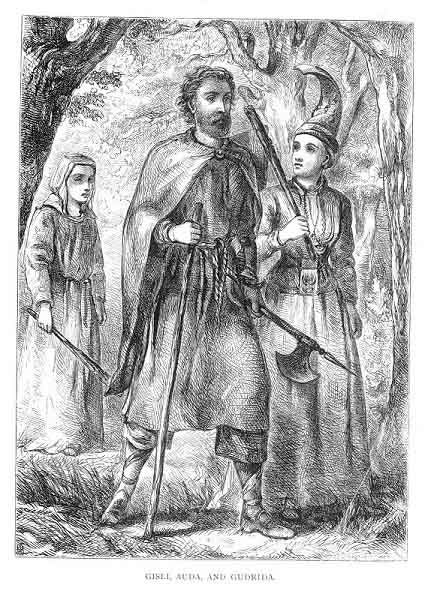 Gísli’s Saga is a powerful tale of brotherhood, betrayal, and doomed loyalty. Gísli Súrsson becomes a fugitive after taking revenge for his brother-in-law’s murder. His years in hiding and inner turmoil make the saga a deeply emotional experience.
Gísli’s Saga is a powerful tale of brotherhood, betrayal, and doomed loyalty. Gísli Súrsson becomes a fugitive after taking revenge for his brother-in-law’s murder. His years in hiding and inner turmoil make the saga a deeply emotional experience.
Like many Icelandic sagas, this one explores the cost of revenge and the strength of personal conscience. Gísli’s character is praised for his moral integrity even as he faces certain death.
Most of Gísli’s Saga takes place in the remote Westfjords of Iceland, especially around Haukadalur Valley and the secluded fjord of Geirthjofsfjordur. Haukadalur, where Gísli’s farm once stood, is near the town of Holmavik, about 143 miles (230 kilometers) from Reykjavik, and can be reached in roughly 3.5 to 4 hours via Route 1 and Route 60.
Explore the best Golden Circle tours and discover Haukadalur and its saga traces, set in one of Iceland’s most dramatic landscapes.
Geirthjofsfjordur, where Gísli spent his final years in hiding, is more difficult to access, requiring a hike or boat trip from the Isafjordur area. Book an accommodation in Isafjordur for easy access to saga-rich terrain and to explore the haunting legacy of this outlaw poet.
Other Notable Location: Isafjordur area – Good base to explore the saga locations via the Saga Trail
Eyrbyggja Saga – Snaefellsnes Peninsula
Eyrbyggja Saga is known for its mix of realistic events and eerie supernatural elements. It tells the story of rival families vying for power in the Snaefellsnes Peninsula. Ghosts, hauntings, and strange omens appear often in this layered saga.
Power, property rights, and community justice are recurring themes. Like many Icelandic sagas, this one shows how history and folklore often blend.
Eyrbyggja Saga unfolds across the dramatic landscapes of the Snaefellsnes Peninsula in West Iceland. A key site within this area is Helgafell, a sacred mountain and political base where many crucial events unfold.
Located near the town of Stykkisholmur, Helgafell sits about 106 miles (170 kilometers) from Reykjavik and is accessible in approximately 2.5 hours via Route 1 and Route 54.
Other Notable Location: Thorsnes and Froda – Haunted homesteads and legal disputes
Hrafnkel’s Saga – East Iceland
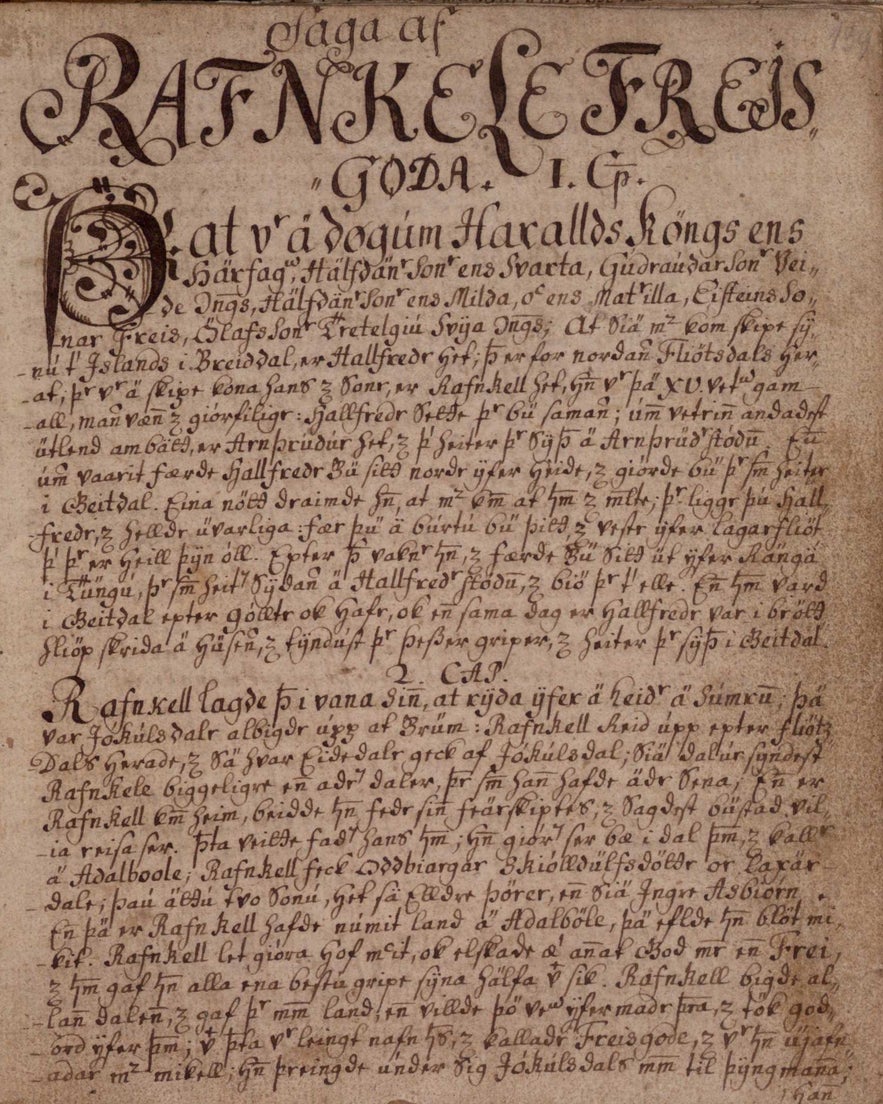 Hrafnkel’s Saga follows a proud chieftain, Hrafnkel Freysgoði, who worships the god Freyr and exacts brutal justice. After a moral mistake, his power is challenged and broken. Unlike other Icelandic sagas, this one presents a clear shift in a character’s worldview.
Hrafnkel’s Saga follows a proud chieftain, Hrafnkel Freysgoði, who worships the god Freyr and exacts brutal justice. After a moral mistake, his power is challenged and broken. Unlike other Icelandic sagas, this one presents a clear shift in a character’s worldview.
The saga explores how pride, punishment, and redemption shape leadership. It’s also notable for being among the first sagas studied in modern schools.
Hrafnkel’s Saga is rooted in the terrain of East Iceland, around Hrafnkelsdalur Valley, the home and base of the chieftain Hrafnkel Freysgoði. Within this valley lies Adalbol, believed to be his main farmstead and the setting for several key events in the saga. The area is located about 385 miles (620 kilometers) from Reykjavik and can be reached in about 8–9 hours via Route 1 and Route 85.
Other Notable Location: Fljotsdalsherad area – Broader eastern region known as Fljotsdalsherad, closely tied to the saga's events
- See more: The Holy Mt. Helgafell on the Snaefellsnes Peninsula & the 3 Wishes
- Explore the landscapes near Hrafnkelsdalur Valley with the Top Things To Do in Egilsstadir
Vinland Sagas: Norse Exploration Beyond Iceland
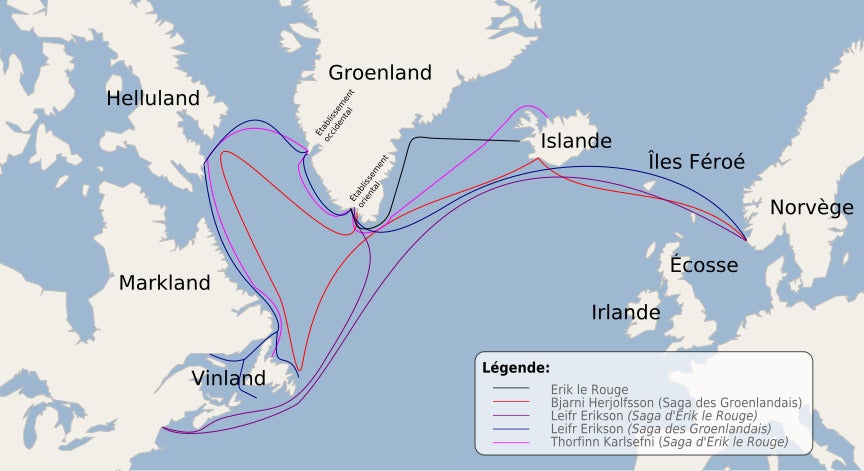 Photo from Wikimedia, Creative Commons. No edits made.
Photo from Wikimedia, Creative Commons. No edits made.
These sagas recount how Norse seafarers pushed beyond Iceland’s shores to explore, settle, and survive in unknown lands. From West Iceland to Greenland and Vinland, the stories offer a rare glimpse into Viking ambition and the edge of the known world.
The Saga of the Greenlanders – West Iceland, Greenland, and Vinland
This saga presents an alternate version of the Norse voyages to North America. It focuses on various explorers, including Leif Erikson, his siblings, and other notable figures like Freydís Eiríksdóttir. The account includes multiple attempts to reach and settle Vinland, marked by internal disputes and encounters with Indigenous peoples.
Themes include exploration, rivalry, family loyalty, and the clash between ambition and survival in unfamiliar lands.
The Saga of the Greenlanders begins in West Iceland, particularly around Eiriksstadir in Haukadalur Valley, believed to be the birthplace of Leif Erikson. Located roughly 90 miles (145 kilometers) north of Reykjavik, it takes about 2 to 2.5 hours to reach via Route 1 and Route 60.
Visitors can explore the reconstructed longhouse at Eiriksstadir, offering a glimpse into the early lives of the saga’s key figures before their journeys west.
The narrative then shifts to Greenland, the base for the expeditions to Vinland. From these remote settlements, Leif and others launched their voyages into the unknown.
Other Notable Location: Icelandic Westfjords – Departure point for several voyages
Saga of Erik the Red – West Iceland and Greenland
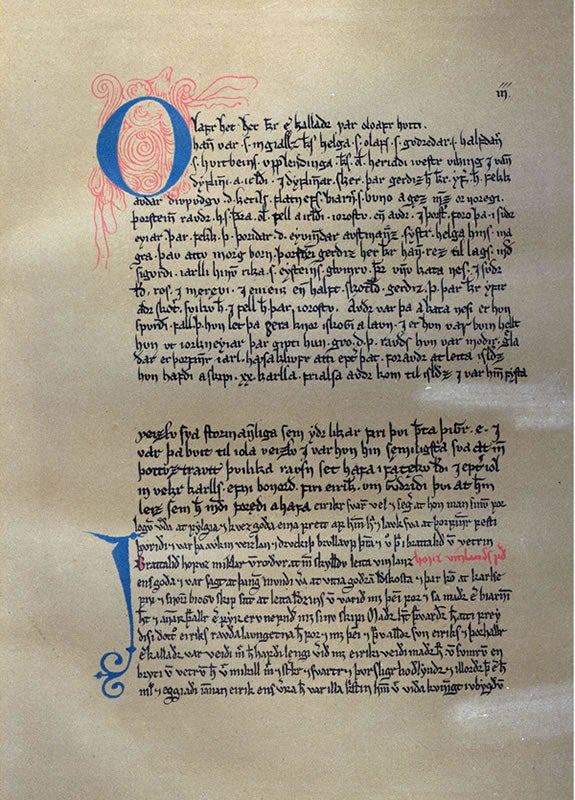 Eiriks Saga Rauda recounts the life of Eirik the Red, who was exiled from Iceland and went on to found the first Norse settlement in Greenland. The saga also tells of his son, Leif Erikson, who sails west and discovers Vinland, believed by many to be part of North America.
Eiriks Saga Rauda recounts the life of Eirik the Red, who was exiled from Iceland and went on to found the first Norse settlement in Greenland. The saga also tells of his son, Leif Erikson, who sails west and discovers Vinland, believed by many to be part of North America.
The story mixes adventure, colonization, and the introduction of Christianity into Norse communities abroad. It emphasizes courage, ambition, and the cultural tensions between paganism and the new religion.
Much of Eirik the Red’s Saga begins in West Iceland, centered around Haukadalur Valley at Eiriksstadir, believed to be the homestead of Eirik the Red before his exile. Located about 90 miles (145 kilometers) north of Reykjavík, it can be reached in approximately 2 to 2.5 hours via Route 1 and Route 60.
The saga later moves to Greenland, where Eirik founded the Norse settlement of Brattahlíd, and to Vinland, where his son Leif Erikson ventured. Today, a turf-roofed replica stands at Eiriksstadir, recreating Eirik’s original home and offering visitors a glimpse into daily life during the Viking Age. Visit Eirik's early homestead as part of this 8-day self-drive tour of West Iceland.
Other Notable Location: Vinland – Distant land reached by Norse explorers
Snorri Sturluson and His Legacy
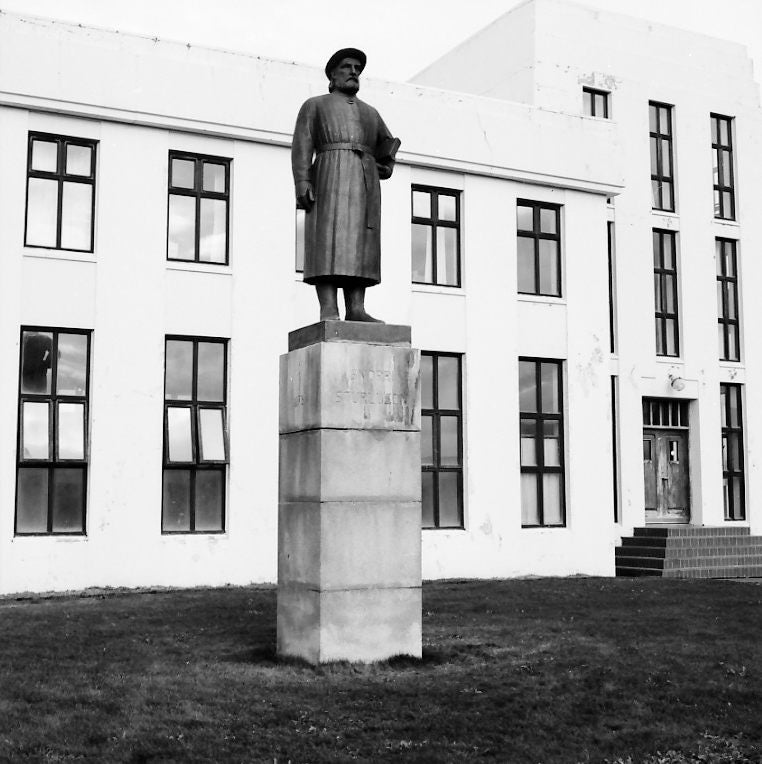
Photo from Wikimedia, Creative Commons, by Einar Einarsson Kvaran. No edits made.
While not the author of the Icelandic Family Sagas themselves, Snorri Sturluson (1179–1241) remains one of the most influential figures tied to Iceland's medieval literary tradition. His name often appears in discussions of the sagas, and for good reason. A statesman, historian, and poet, Snorri wrote the Heimskringla, a sweeping account of the Norse kings.
He compiled the Prose Edda, which preserves many of the myths of Old Norse gods like Odin, Thor, and Loki. He also documented key events of the Age of the Sturlungs, an era marked by internal conflict and power struggles in 13th-century Iceland.
Snorri lived in Reykholt, located in West Iceland about 62 miles (100 kilometers) north of Reykjavik, where visitors can now explore Snorrastofa, a cultural and research center built on the site of his historic estate.
One of the oldest man-made geothermal hot springs in Iceland, said to have been constructed by Snorri himself, still exists here, though it is not for bathing. It's next to the modern Krauma Spa, a great place to unwind while in the area.
Though authorship remains uncertain, some scholars believe Snorri may have also written Egil's Saga, given its detailed political and legal commentary. Regardless, his contributions to Norse literature continue to shape how Icelandic and Norse history is understood today.
Other Icelandic Sagas and the Regions Behind the Stories
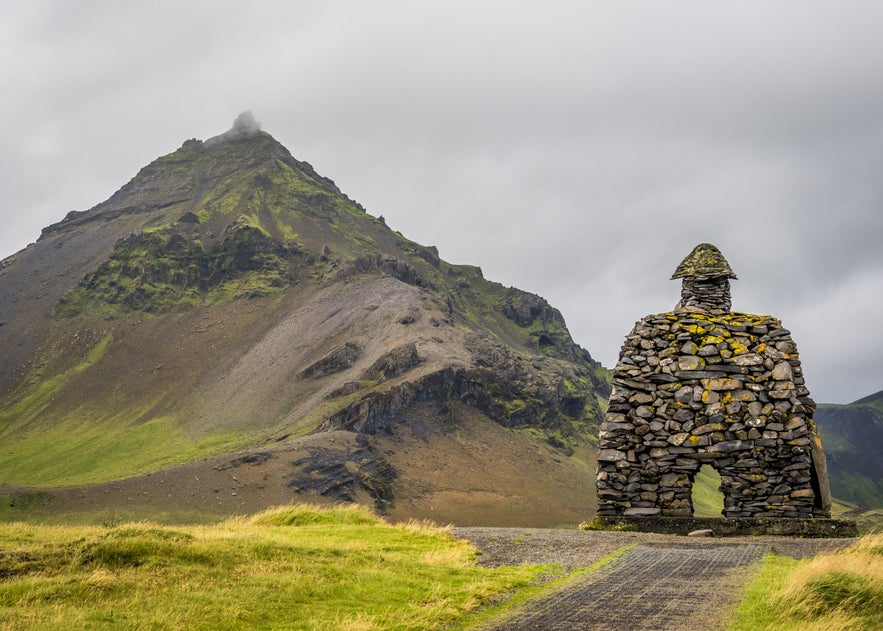 Several lesser-known Icelandic sagas also take place in real Icelandic landscapes. Though less widely read than the major sagas, each one offers a unique view into early Icelandic society, values, and beliefs.
Several lesser-known Icelandic sagas also take place in real Icelandic landscapes. Though less widely read than the major sagas, each one offers a unique view into early Icelandic society, values, and beliefs.
The Saga of Bárður Snæfellsás (Bárðar Saga Snæfellsáss)
This saga follows Bárður Snæfellsás, a part-human, part-troll figure who becomes the guardian spirit of the Snaefellsnes Peninsula. The narrative blends legend and myth, featuring supernatural encounters, elemental forces, and dramatic landscapes. Bárður's retreat into the glacier Snaefellsjokull adds a mystical tone to the region's saga heritage.
Key Location: Snaefellsnes Peninsula (West Iceland) – The saga's primary setting, offering striking lava fields, coastlines, and views of Snaefellsjokull Glacier, all tied to Bárður’s legend.
The Saga of the People of Vatnsdal (Vatnsdaela Saga)
Chronicling the lineage of Ingimund the Old and his descendants, this saga begins with his journey from Norway to Iceland, guided by prophecy. It details the founding of his family’s settlement. It also provides insight into the challenges of early settlers and the rise of local chieftains.
Key Location: Vatnsdalur Valley (North Iceland) – A scenic area reflecting the saga's setting and early settlement history.
The Saga of the People of Kjalarnes (Kjalnesinga Saga)
At the center of this narrative is Búi Andríðsson and his adventures. This saga blends elements of realism with folklore and supernatural occurrences. The narrative explores themes of honor, family, and the integration of Irish immigrants into Icelandic society.
Key Location: Kjalarnes Peninsula (near Reykjavik) – Located just off the Ring Road, this area offers views of the Capital Region and serves as the backdrop for several events in the saga.
The Saga of Droplaug’s Sons (Droplaugarsona Saga)
At the heart of this story are Droplaug’s sons, Helgi and Grímr, who seek revenge for their father's murder. The narrative highlights family loyalty and justice, while portraying the complexities of early Icelandic law.
Key Location: Fljotsdalur Valley (East Iceland) – The saga's primary setting, offering a glimpse into the region's historical significance.
The Saga of the Sworn Brothers (Fostbraedra Saga)
A narrative about two sworn brothers known for their contrasting personalities, Þorgeirr as a fierce warrior and Þormóðr as a poet. Their adventures across Iceland and abroad explore themes of friendship, honor, and the tension between violence and artistry.
Key Locations: Vopnafjordur (and surrounding areas in Northeast Iceland) – Regions associated with the saga's events and characters.
The Saga of Gunnlaug Serpent-Tongue (Gunnlaugs Saga Ormstungu)
This poetic saga follows the tragic love triangle between Gunnlaugr, Hrafn, and Helga the Fair. The saga explores themes of love, honor, and fate, culminating in a fatal duel between the two poets vying for Helga's affection.
Key Locations: Borgarfjordur and Reykholt (West Iceland) – Significant sites in the saga, with Reykholt being historically linked to Snorri Sturluson, a notable saga compiler.
The Saga of Hallfreðr Troublesome-Poet (Hallfreðar Saga Vandraedaskalds)
Hallfreðr’s inner conflict between old pagan beliefs and emerging Christian values drives this saga. It explores his inner struggles, personal relationships, and dealings with Norwegian royalty, offering insight into Iceland’s cultural and religious shifts around the year 1000.
Key Locations: Various sites across South and West Iceland – Reflecting Hallfreðr's travels and experiences.
The Saga of Kormákr (Kormáks Saga)
Following the troubled romance of Kormákr and Steingerðr, this narrative blends emotional drama with hints of the supernatural. It addresses the tension between love, destiny, and societal duty in early Iceland.
Key Locations: Isafjordur and surrounding areas (Westfjords) – Regions closely associated with the saga's events.
Where to Explore Icelandic Sagas Today
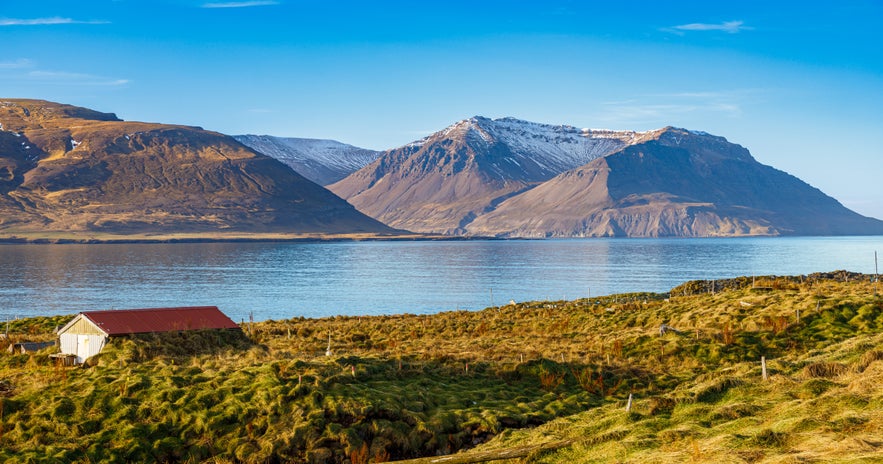 Thanks to preservation efforts, you can now follow Saga Trails marked across the country. These trails include information signs, scenic drives, and footpaths tied to Icelandic sagas. GPS-based apps and regional maps help you navigate them. Major museums also provide deeper insight into the Icelandic sagas.
Thanks to preservation efforts, you can now follow Saga Trails marked across the country. These trails include information signs, scenic drives, and footpaths tied to Icelandic sagas. GPS-based apps and regional maps help you navigate them. Major museums also provide deeper insight into the Icelandic sagas.
Saga Trails and Marked Locations Across Iceland
To make the sagas more accessible, Iceland has developed a network of Saga Trails, routes marked by roadside signs, plaques, and information boards that connect real locations to legendary events. These paths allow travelers to follow in the footsteps of saga characters while discovering the history and culture woven into the landscape.
This Icelandic Saga Map offers an interactive way to explore these locations.
Roads, markers, and landscape interpretation
Throughout the country, brown and white signs labeled Sogustadur identify significant saga sites. These markers often include information in both Icelandic and English, detailing the events associated with each location.
In regions with dense saga activity, such as Borgarfjordur and the Snaefellsnes Peninsula, more comprehensive signage systems provide deeper insights into the sagas' historical contexts.
Key Saga Locations Across Iceland
These locations connect some of Iceland’s most famous sagas to the landscapes where they were set. Many are marked with signs or plaques, while others can be explored through museums or interactive experiences:
-
Borgarnes & Borgarfjordur (West Iceland) – Central to Egil’s Saga, this region includes Egil’s family farm and nearby Reykholt, later home to saga writer Snorri Sturluson. Visit the Settlement Center in Borgarnes for exhibitions on Egil’s life and Iceland’s early settlement.
-
Hlidarendi, Bergthorshvoll & Thingvellir (South Iceland) – Key settings in Njál’s Saga, including homesteads and the site of historic legal trials. The Saga Centre in Hvolsvollur offers deeper insights into the saga.
-
Bjarg & Drangey Island (North Iceland) – Associated with Grettir’s Saga, Drangey was the outlaw’s final refuge. Boat tours to the island depart from Saudarkrokur.
-
Haukadalur & Geirthjofsfjordur (Westfjords) – Remote yet striking settings for Gísla Saga, these areas reflect the saga’s themes of isolation and inner conflict.
-
Helgafell, Thorsnes & Froda (Snaefellsnes Peninsula) – Locations central to Eyrbyggja Saga, known for its eerie tales of hauntings and supernatural justice. These spots are part of a well-marked route across the peninsula.
-
Hrafnkelsdalur & Fljotsdalsherad (East Iceland) – The valley of Hrafnkelsdalur is believed to be the stronghold of Hrafnkel Freysgodi from Hrafnkels Saga. Waypoints provide background on the events that unfolded here.
-
Orlygsstadir (North Iceland) – Though documented in the Saga of the Sturlungs and not the Icelandic Sagas, Orlygsstadir hosted Iceland’s largest historical battle in 1238. Experience the event through virtual reality at the nearby 1238: The Battle of Iceland Museum.
Museums That Showcase the World of Icelandic Sagas
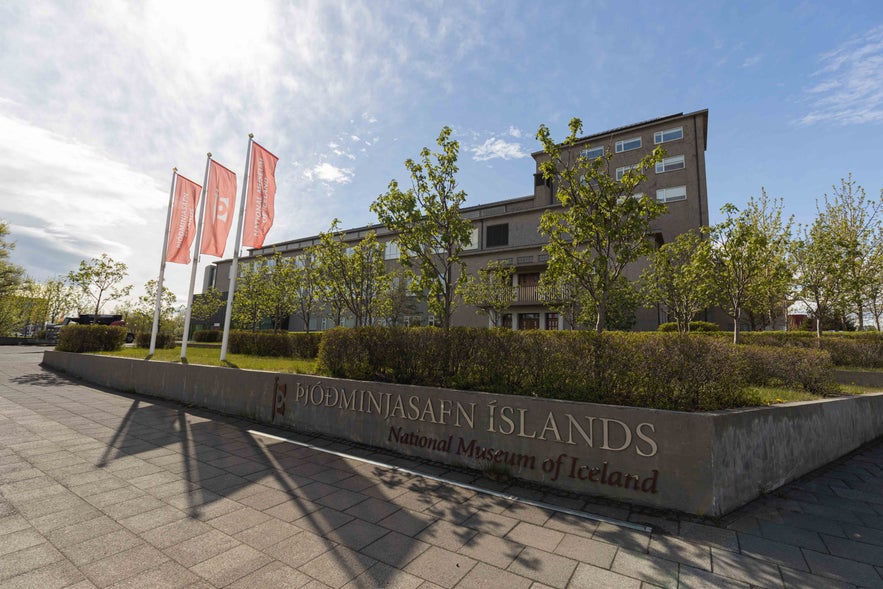 To go beyond the landscapes, visit museums across Iceland that focus on the sagas. They offer immersive exhibits, historical manuscripts, and multimedia displays. These institutions bring saga characters and events to life—a must for literature and history lovers.
To go beyond the landscapes, visit museums across Iceland that focus on the sagas. They offer immersive exhibits, historical manuscripts, and multimedia displays. These institutions bring saga characters and events to life—a must for literature and history lovers.
-
Settlement Centre (Egil’s Saga): Located in Borgarnes, this museum features two main exhibitions: one about Iceland's early settlement and another dedicated to Egil’s Saga. Visitors can explore the life of the poet-warrior Egill Skallagrimsson through interactive displays, dramatic narration, and reconstructions of Viking life and battles.
-
Saga Centre (Njal’s Saga): Found in Hvolsvollur, near many of the real-life locations from Njals Saga. The museum focuses on the characters, conflicts, and historical backdrop of the saga. It includes dioramas, maps, and detailed explanations of saga-era law and society. The center also provides information about other sagas connected to South Iceland.
-
Snorrastofa in Reykholt: Snorrastofa is a cultural and research institute dedicated to Snorri Sturluson, a key figure in the recording of sagas and Norse mythology. Located in Reykholt, where Snorri once lived, the museum houses manuscripts and exhibits on medieval scholarship. It also houses archaeological remnants of Snorri’s estate, including a 13th-century hot spring bath.
-
National Museum and Arni Magnusson Institute in Reykjavik: The National Museum of Iceland offers a broad overview of the country’s cultural history. It features artifacts from the saga age, including weapons, farm tools, and religious items. It recently opened a permanent exhibition called World in Words, showcasing some of Iceland’s most important medieval texts, including parts of the original Laxdaela Saga.
-
Saga Museum: This interactive museum in Reykjavik uses life-sized wax figures and audio guides to tell the story of Iceland’s early settlers and saga heroes. It brings key saga moments to life in a dramatic, family-friendly format that blends education and visual storytelling.
Experience Icelandic Sagas Through Travel
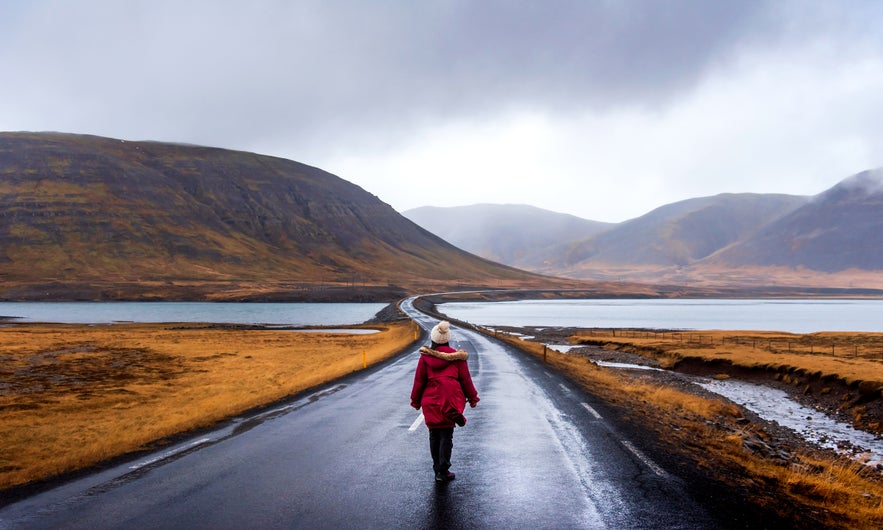 Visiting Iceland is one of the best ways to connect with its saga heritage. Many of the places described in the sagas are real and still accessible today. From valleys to marked saga trails, the landscape helps bring the stories to life.
Visiting Iceland is one of the best ways to connect with its saga heritage. Many of the places described in the sagas are real and still accessible today. From valleys to marked saga trails, the landscape helps bring the stories to life.
Reading a saga before traveling, or while visiting the locations, adds context to what you see. You can bring an Icelandic Saga book along your journey to help you connect the stories to the landscapes you explore. Knowing the events tied to each site makes the experience more meaningful.
Whether exploring on your own or following marked routes, engaging with the sagas through travel offers a deeper understanding of Iceland’s history and the lasting impact of its stories.
Which saga are you most excited to explore? Have you visited any Saga sites in Iceland? Share your thoughts in the comments, we’d love to hear which stories or regions inspired your journey.


